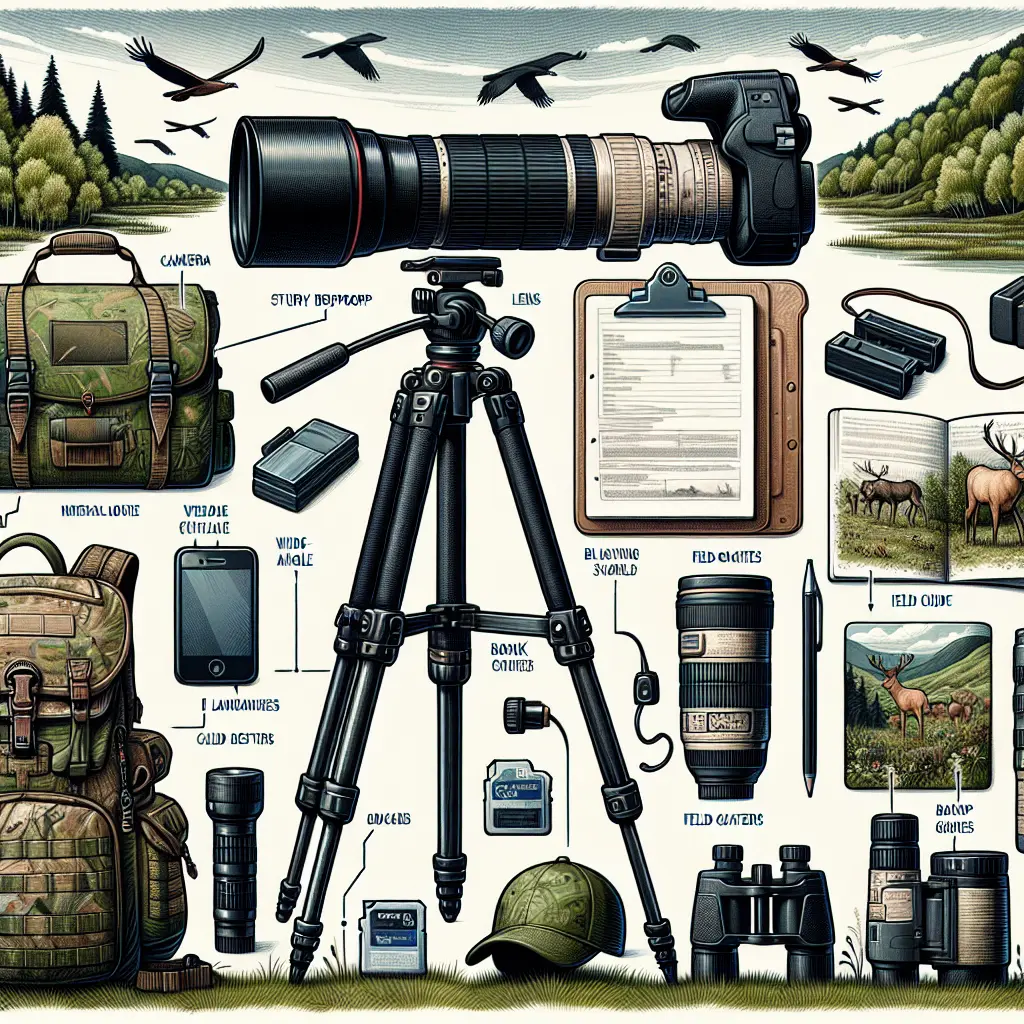
Embarking on a Wildlife Photography Adventure
Embarking on a wildlife photography adventure promises breathtaking encounters with nature’s most captivating creatures. To ensure these moments are perfectly captured, having the right wildlife photography gear is paramount. Whether you’re a seasoned professional or a passionate enthusiast, assembling essential wildlife photography equipment tailored to your needs is the key to success. From selecting the best camera for wildlife photography to choosing versatile wildlife photography lenses, each component of your setup can significantly impact the quality of your images.
Choosing the Best Camera for Wildlife Photography
Selecting the best camera for wildlife photography is foundational to capturing stunning images. With technological advancements, mirrorless cameras have become popular due to their lightweight design and fast autofocus capabilities, essential for capturing fast-moving wildlife. Models such as the Sony A9 II and Canon EOS R5 are often recommended by professionals for their high frame rates and impressive image quality (source).
When investing in a camera, consider its sensor size, burst shooting capabilities, and low-light performance. A full-frame sensor can provide better image quality, particularly in challenging lighting conditions often encountered in wildlife settings.
Wildlife Photography Lenses: Versatility and Range
The choice of wildlife photography lenses significantly impacts the quality of your shots. Telephoto lenses, like the Canon RF 100-500mm f/4.5-7.1L IS USM, allow photographers to capture subjects from a safe distance, maintaining both clarity and detail. According to William Patino, using a telephoto lens can also enhance landscape shots by compressing the scenery, offering a unique perspective on natural environments (source).
For more versatility, zoom lenses that cover a wide range of focal lengths can be invaluable, providing flexibility in various shooting scenarios without changing lenses frequently.
Stability with Tripods and Monopods
Investing in a reliable tripod for wildlife photography is crucial for achieving stability, especially in low-light situations. Brands like Manfrotto and Gitzo offer sturdy options that are lightweight and easy to carry. A tripod ensures steadiness for long exposures or when using heavy lenses.
Alternatively, a monopod offers mobility and support for quick movements—ideal for dynamic shooting environments where speed is critical (source). Choosing between a tripod and a monopod depends on your shooting style and the specific demands of your adventure.
Essential Wildlife Photography Accessories
Enhancing your shooting experience involves selecting the right wildlife photography accessories. Remote shutters can prevent camera shake during long exposures or when shooting skittish subjects from afar. Protective cases are indispensable for safeguarding your gear against harsh environmental conditions.
An emerging tool is an Instagram filter that warns when you're too close to wildlife, promoting ethical and safe practices (source). These accessories not only improve your workflow but also ensure safety and respect for wildlife habitats.
Outdoor Photography Gear: Backpacks and Clothing
Transporting your gear comfortably requires a durable wildlife photography backpack. Brands like Lowepro and MindShift Gear design backpacks specifically for photographers, offering customizable compartments and weather-resistant materials.
Appropriate wildlife photography clothing enhances comfort and mobility during shoots. Opt for clothing that is adaptable to various weather conditions, breathable, and durable. Waterproof camera gear is equally vital, protecting your equipment from unexpected weather changes—a lesson underscored by the dramatic footage of a camera succumbing to California’s Park Fire (source).
Scouting with Wildlife Photography Binoculars
Wildlife photography binoculars are invaluable for scouting subjects before capturing them through your lens. High-quality binoculars provide clear, detailed views of distant subjects, allowing photographers to plan their shots without disturbing wildlife.
Incorporating Ethical Wildlife Photography Practices
Ethical considerations are paramount in wildlife photography. Shem Compion emphasizes the importance of responsible practices that prioritize animal welfare and ecosystem preservation (source). Avoiding disturbances to natural habitats not only ensures ethical compliance but often results in more authentic images.
Staying Informed with Current Trends and Competitions
Staying abreast of current trends enriches your photography journey. Competitions like the Mangrove Photo Competition highlight pressing environmental issues while showcasing innovative techniques (source). Engaging with such platforms can inspire new perspectives and creative approaches to your work.
Moreover, works like Jaime Rojo's award-winning photograph of monarch butterflies demonstrate how poignant storytelling through images can spotlight conservation efforts (source).
Conclusion
As you embark on your wildlife photography adventures in 2024, equipping yourself with the right wildlife photography gear tailored to your needs is crucial. From selecting the best camera for wildlife photography to incorporating ethical practices, each element of your wildlife photography setup contributes to capturing awe-inspiring moments in nature. By integrating these insights and staying informed about current trends and innovations, you are better positioned to create impactful images that resonate with audiences worldwide. Embrace the wild with preparation and passion, ensuring each frame tells a compelling story of our planet's incredible biodiversity.
Embrace Your Wild Side
I invite you to share your experiences, insights, or thoughts on wildlife photography in the comments below. What gear has been indispensable on your journeys? How do you incorporate ethical practices in your work? Your stories could inspire others to embark on their own photographic adventures. Until next time, keep exploring and capturing the wonders of the wild.
Author: Emily Dawson